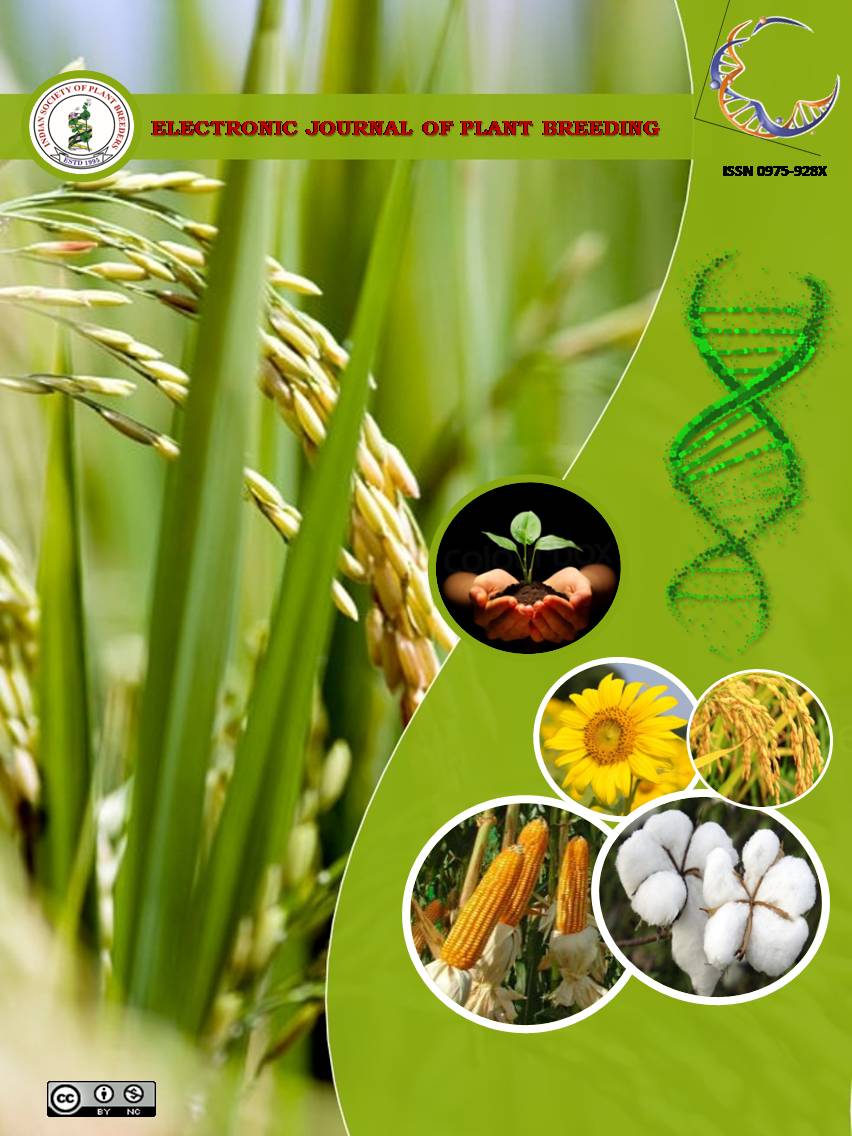Combining ability and heterosis for seed cotton yield, its components and fibre quality traits in upland cotton (Gossypium hirsutum L.)
Abstract
The investigation was carried out to estimate combining ability, heterosis and hybrids suitable for recombination breeding for seed cotton yield, yield components and fibre quality traits designed among 13 parents and 40 hybrids developed through line × tester method. The analysis of variance indicated substantial variability among the experimental material for yield, its components and fibre quality traits. All the characters were predominantly controlled by non-additive gene action. Four parents namely TCH 1819, TSH 0499, SVPR 2 and SVPR 5 were identified as very good general combiners for most of the yield and fibre quality traits. The cross combinations, TCH 1819 × TSH 0499, TCH 1819 × MCU 7, KC 2 × SVPR 4, TCH 1818 × SVPR 5, TCH 1818 × SVPR 2 and TCH 1818 × CO 14 were identified as the best hybrids and these are well suited for exploitation through heterosis breeding as it recorded highest per se performance, significant sca effects and standard heterosis for important yield components and fibre quality traits. Besides, the crosses viz., TCH 1819 × SVPR 5 and TCH 1819 × SVPR 4 could be recommended for recombination breeding as they satisfied the presence of significant gca effects of the parents and non significant sca effects.

It is certified that:
- The corresponding author is fully responsible for any disputes arising due to the publication of his/her manuscript.
- The article has been seen by all the authors who are satisfied with its form and content.
- The sequence of names of authors in the by-line is as per their relative contribution to this experiment, giving due credit to all scientists who made notable contribution to it.
- All the authors fully understand that inclusion of any other co-authors or exclusion of any co-authors is not possible once the article has been submitted to the journal.
- The corresponding author takes full responsibility for this article.
- The address of the organization where the research was conducted is given.
- The article is exclusive for this journal, and the results reported here have not been sent (and will not be sent during its consideration by this journal) for publication in any other journal.
- Authors agree to abide by the objective comments of referees and do agree to modify the article into a short note as per the recommendation, for publication in the Electronic Journal of Plant Breeding.
- If published in Electronic Journal of Plant Breeding, the copyright of this article would vest with the Indian Society of Plant Breeders, who will have the right to enter into any agreement with any organization in India or abroad engaged in reprography, photocopying, storage and dissemination of information contained in it, and neither we nor our legal heirs will have any claims on royalty.


